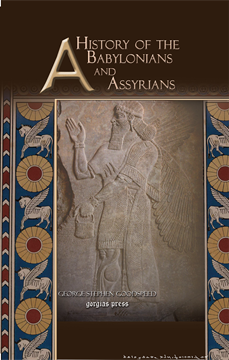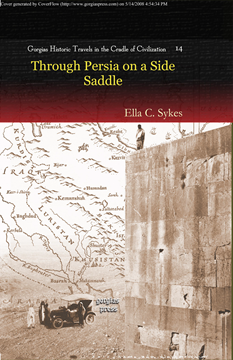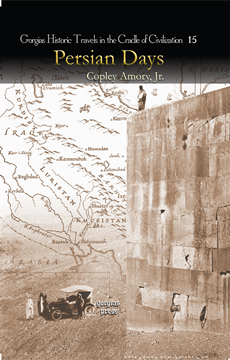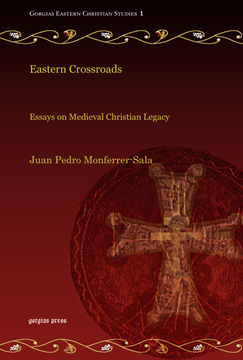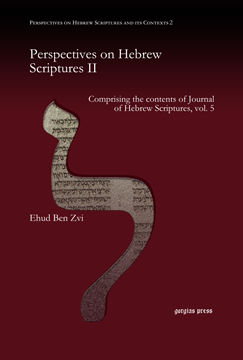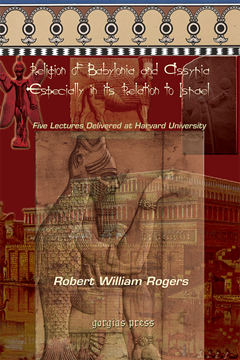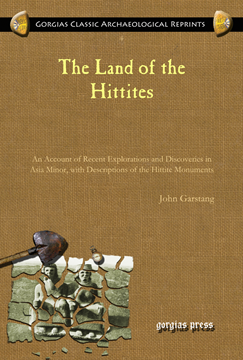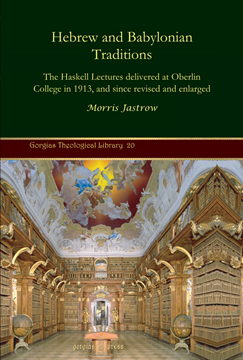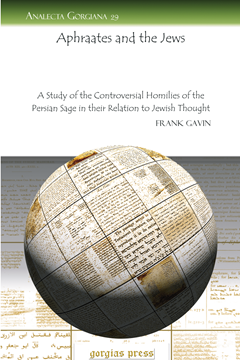A History of the Babylonians and Assyrians
ISBN: 978-1-59333-557-1
As an introduction to the ancient history of Iraq, Goodspeed’s book has stood the test of time. The reader is given a detailed rendition of the history of the Old Babylonian, Assyrian, and Neo-Babylonian Empires. Although out of print for many years, the book is consistently cited as a helpful introduction to the subject.
$191.00 (USD) $114.60 (USD)
Through Persia on a Side-Saddle
Series: Kiraz Historic Travels Archive 14
ISBN: 978-1-59333-558-8
This written travelogue of Ella Sykes’ historic first journey across central Asia has been considered a classic of women’s studies as well as a historic travel account. Detailing the impressions of Sykes while traveling with her diplomat brother through central Asia in the nineteenth century, this illustrated volume has a wide appeal to those interested in Iran as it used to be.
$167.00 (USD) $100.20 (USD)
Persian Days
By Copley Amory
Series: Kiraz Historic Travels Archive 15
ISBN: 978-1-59333-608-0
A fascinating travelogue through southern and central Iran, this early nineteenth-century account is written with wit and insight; the polymathic Copley Amory Jr. proves an able tour guide. The reader is taken from Tehran to Kerman and back, along a trail that highlights ancient sites of historical importance. Along the way, the culture of “tribes and tents” is described, as well as a plucky misadventure involving encounters with camel caravans and excessive automobile troubles. Written in a witty and engaging style, this account of a classic journey contains an education in the history and customs of a vanishing way of life.
$161.00 (USD) $96.60 (USD)
Eastern Crossroads
Essays on Medieval Christian Legacy
Series: Gorgias Eastern Christian Studies 1
ISBN: 978-1-59333-610-3
This volume contains papers from the First International Congress on Eastern Christianity held in Córdoba, Spain, November 2005. The encounter of medieval Christian writers with several linguistic traditions through the Middle Ages produced one of the most important branches of Middle Eastern literature. This encounter not only changed the nature of the respective writings throughout time, but also influenced considerably the development of the legacies transmitted by the writers and the scholars of various Eastern Christian churches.
$214.00 (USD) $128.40 (USD)
Perspectives on Hebrew Scriptures II
Comprising the contents of Journal of Hebrew Scriptures, vol. 5
By Ehud Ben Zvi
ISBN: 978-1-59333-612-7
This volume incorporates all the articles and reviews published in Volume 5 (2004-2005) of the Journal of Hebrew Scriptures.
$268.00 (USD) $160.80 (USD)
The Ancient Egyptians and the Origin of Civilization
ISBN: 978-1-59333-609-7
This monograph, in its second, hard-to-locate edition, proposes a connection between prehistoric monumental European sites and those of the Pyramid Age in Egypt. Using ethnicity as a basis, Smith ties the ancient peoples of Egypt to those of Syria and discusses how Egyptian culture spread from its point of origin.
$143.00 (USD) $85.80 (USD)
The Religion of Babylonia and Assyria, Especially in its Relations to Israel
Five Lectures Delivered at Harvard University
ISBN: 978-1-59333-614-1
Rogers, in a series of five lectures, explores the religion of ancient Mesopotamia by initially recounting the discovery of that lost religion. He then studies the gods, cosmologies, and sacred texts of the people of ancient Iraq. His work concludes with an examination of their formative myths and epics.
$155.00 (USD) $93.00 (USD)
The Land of the Hittites
An Account of Recent Explorations and Discoveries in Asia Minor, with Descriptions of the Hittite Monuments
Series: Kiraz Classic Archaeological Reprints 4
ISBN: 978-1-59333-617-2
This important summary of Garstang’s travels and studies in Anatolia (present-day Turkey) is fully illustrated with nearly 100 photographs as well as maps and plans. This account details the marvels revealed by archaeology in ancient western Asia. The study begins with documentation of the geography of the region, giving the reader a sense of the world as seen by the Hittites of antiquity. Garstang outlines the history of the Hittite period before detailing the monumental architecture of this people. Garstang’s treatment concludes with a substantial history of the Hittites, people referred to in the Bible and in the historical records of other ancient Near Eastern civilizations.
$233.00 (USD) $139.80 (USD)
Hebrew and Babylonian Traditions
The Haskell Lectures delivered at Oberlin College in 1913, and since revised and enlarged
Series: Kiraz Theological Archive 20
ISBN: 978-1-59333-618-9
In this formidable study, Jastrow compares several aspects of the religious life of the Israelites and ancient Babylonias by comparison of their written texts. Among the topics examined are the creation and flood accounts, the concept of the Sabbath, and the ethics of both cultures.
$180.00 (USD) $108.00 (USD)
Aphraates and the Jews
A Study of the Controversial Homilies of the Persian Sage in their Relation to Jewish Thought
By Frank Gavin
Series: Analecta Gorgiana 29
ISBN: 978-1-59333-620-2
In the first English attempt to address the Syriac homilies of Aphraates, Gavin sets a context for the material by considering the church and the sermons themselves. The topic of how the Jews are treated in the homilies is given special attention.
$50.00 (USD) $30.00 (USD)
